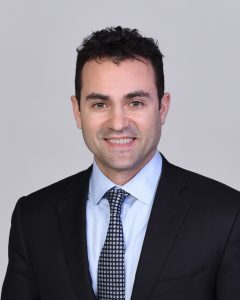Joseph Porta, SIOR, Broker/Manager of Porta & Co. recently provided insight for the Spring 2019 Edition of the MEREDA Index by sharing his perspective on the Commercial Sector over the last 6 months.  With Q1 of 2019 behind us, and an active second quarter approaching, it’s a perfect time to reflect on southern Maine’s capital real estate markets. I am frequently asked; in a market where pricing is higher than it has been in over a decade how does anyone acquire investment real estate without over paying? In short,
With Q1 of 2019 behind us, and an active second quarter approaching, it’s a perfect time to reflect on southern Maine’s capital real estate markets. I am frequently asked; in a market where pricing is higher than it has been in over a decade how does anyone acquire investment real estate without over paying? In short,
very carefully, but more specifically, by sticking to fundamentals with an increased focus on creating value between Net Operating Income (NOI) and after-tax cash flow. Investors are managing risk by prioritizingvalue over short-term cash flow.
Limiting risk is about managing a position’s exposure to a worst-case outcome. To effectively do that late in a business cycle requires a readiness to reinvest capital, a willingness to rely on appreciation, and the patience to realize returns over longer periods of time (5-10+ years). For example, this could mean acquiring an empty building and repositioning it for a higher and better use as we’ve seen with recent redevelopments
in Portland’s Bayside neighborhood, or purchasing an asset based on its future ability to generate a higher rent as we’ve observed in Monument Square. The common denominator in both situations is an under performance of some kind where an asset’s value is not exclusively derived from its existing income.
After 8 years of economic expansion and historically low interest rates, capitalization rates have dipped under 7% for the strongest commercial assets in southern Maine. This has produced soaring valuations with pricing in some instances trading at or above replacement cost. In effect, deal pricing is equally driven by factors relating to the capital stack and financing as it is from the relationship between NOI and price. Professional operators (owners/funds) utilize financing structures where membership equity (investor) is layered onto lower leveraged institutional lending to create a less expensive cost to capital. Opportunity zones have added yet
another wrinkle to the life span of investment capital going into these designated areas. New class A office buildings for Sun Life Financial, WEX and Covetrus have been able to utilize these tax advantages, effectively opening pathways where new construction is a plausible solution.
The underlying driver of this market growth is the sustained expansion of Portland’s downtown and greater metropolitan statistical area (MSA). Entering Q2 and looking forward to Q3, we can expect a continued shift in emphasis onto internal rate of return, and the deployment of investment capital with the patience to utilize time in order to reach underwriting objectives.
Click here to download the full report. For more information and a video on the MEREDA Index, please click here.


